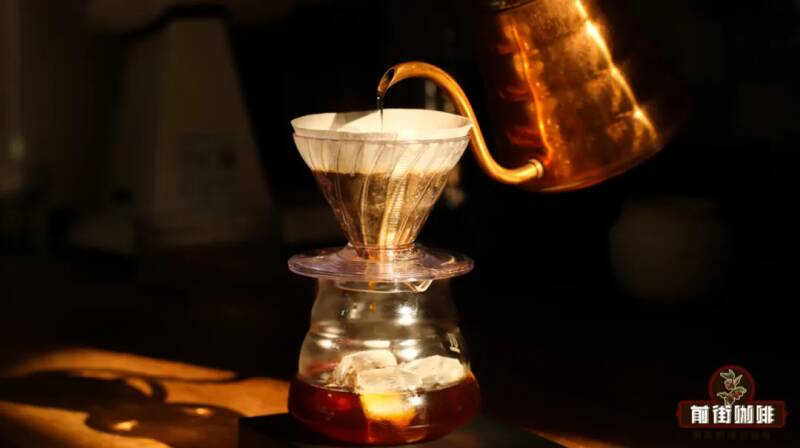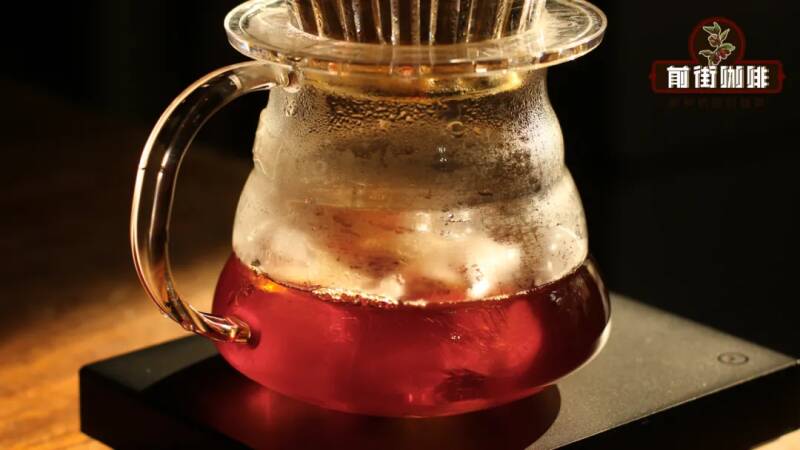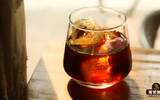How to make ice hand flushing at home? How should the mixing method and one-stage method be used?
Yesterday, a friend asked Qianjie after buying coffee beans. Because he was used to making hot coffee, all kinds of parameters were almost fixed, but recently he was infatuated with the ice hand in the store and wanted to know if he could copy it at home. What parameters need to be adjusted from "hot" to "cold"?

Remember! Ice hand brewing is either "hand brewing coffee with ice", or using ice cubes to "urgently" cool the coffee liquid in a short period of time, while properly diluting the extraction method, so it is also called "rapid cooling hand brewing". It is not only the way of production in mainstream independent cafes, but also the home brewing method favored by countless hand players.
Qianjie noticed that in some popular science tutorials, they would describe ice hands as "hot coffee + ice cubes" to confuse the two. In fact, a cup of coffee that has been brewed in a preset proportion (such as 1:15) is already in the appropriate concentration range, and if an extra pile of ice is added at this time, the coffee will most likely become "light as water". Therefore, if we want the coffee to have a cool and comfortable taste without losing the fragrant aroma layer, we have to adjust the parameters on the basis of hot hand brewing.

When we split the frame of the ice hand, we can get six parameters: powder quantity, water quantity, ice quantity, grinding degree, water temperature, and time. To put it simply, the amount of powder depends on how big a cup of coffee you want to drink, and the water temperature depends on the degree of roasting of the beans you brew (86-88 ℃, 90-93 ℃). The time is mainly affected by manipulation and flow rate, and the rest is "powder-ice-water ratio" and "grindability".
Ice and hot water, four or six cents.
It is precisely because of the addition of non-negligible factors-ice, the first thing to consider is the amount and usage of "ice". Here, ice has two uses: one is to cool down, and the other is to dilute. So the best amount of ice should be to ensure that after all melts into water, the coffee liquid just reaches the palatable concentration and is cold enough.
To this end, WBC champion James Hoffmann has done a lot of ice experiments, through different amounts of ice to make more pots of coffee, and then test the final temperature. He found that when the liquid cooled to about 5 ℃, the "remaining ice" of all coffee melted slowly and the temperature gradually stabilized. At this time, no matter how much ice is added, the coffee does not become more "frozen". So, this part of the ice that has melted into water is the "best dosage" we are looking for.
Of course, the actual ice consumption should also take into account the quality of the ice. James compared coffee made from-18 ℃ ice with-20 ℃ ice. The lower the temperature of the ice, the slower the melting water and the higher the cooling efficiency. Under the same extraction parameters, high-quality ice can be exchanged for a cup of cold enough hand-brewed coffee more quickly. For example, if the cooling effect of the refrigerator used at home is good, and the mold is big enough, the ice quality will be harder, so you can use less ice to flush. But if you are using an ice maker or small ice grains that are not cold enough, you need more ice to make the coffee cold.
After a lot of data, James believes that the ice-water ratio can be controlled at 4:6, such as 15g powder per person in front street (the ratio of powder to water at 1:15 for heat flushing), and the corresponding ice flushing parameter is 90g ice + 135g hot water. When determining that the ice temperature is low enough, the ice ratio can be reduced to about 80g ice + 150g hot water.
Grind it finer and smell more.
With regard to ice hand flushing, we must admit the fact that after cooling, the aroma intensity of coffee weakens, such as sweetness and layering, which is why whenever guests struggle with hot and cold, the front street will emphasize that if you want to drink flavor, you'd better choose hot.
The reason for grinding coffee powder is mainly to make up for the lack of extraction time caused by too little water. Second, finer grinding also aims to increase the extraction rate, allowing coffee to release more flavor substances under relatively less hot water washing. The EK43s bean grinder used in the former street as an example, if a coffee hot brew uses a scale of 10 frames, then the ice flush will be adjusted to 9.5. Hand grinder to C40 as an example, 24026 is a relatively moderate hot hand grinding, when replaced by ice flushing, we can appropriately refine 2 to 3 squares.
Small water, take your time.
As mentioned earlier, ice flushing has less hot water than heat flushing, and if the usual large water flow is used to wash the powder layer, the cooking time will be greatly shortened, and many of the flavors released in the middle and later sections will be fully filled before the flavors released in the middle and later sections can be dissolved. This requires that we should simulate the thermal shock frame and redistribute the hot water that needs to be injected. The front street will usually divide more sections of water or control the small flow to bring the time back to 2 minutes.
If you think these ice flushing plans are too complicated to use your brains, the only trick in the front street is to take out your little spoon and stir it.
Powder quantity: 15g water injection: 150g ice cube: 80g (placed in the lower pot) Water temperature: 93 ℃ Grinding: fine grinding (EK43s scale 8 or C40 scale 20) filter apparatus: flat bottom filter cup
After pouring in the coffee powder, directly pour the target water 150 grams at a time, then stir about 10 times in one direction with a small spoon to allow the powder to come into full contact. After all the coffee liquid has flowed into the pot, you can remove the filter cup and shake the coffee liquid until the ice is completely dissolved.
-END-
Front Street Cafe
No. 10 Baoqian street, Yandun road, Dongshankou, Yuexiu district, Guangzhou, Guangdong province
Important Notice :
前街咖啡 FrontStreet Coffee has moved to new addredd:
FrontStreet Coffee Address: 315,Donghua East Road,GuangZhou
Tel:020 38364473
- Prev

What do you need to pay attention to when making cold coffee? Why is it that the finer the grinding, the lighter the cold-extracted coffee?
Recently, Qianjie received such a private message backstage that a friend wanted to drink cold coffee with a stronger flavor, so he adjusted the grinding to a very fine state. As a result, the taste of cold coffee is much lighter than the original! This puzzled him. It was obvious that the grinding had been fine-tuned, but why was it lighter? Positive
- Next

Panamanian Coffee beans | introduction of Juliet Coffee beans in Rosa Manor of 90 + Company in Walken area
Panamanian coffee is well-known in the global coffee market, especially the rose summer variety. As early as the end of the 19th century, Europeans immigrated to Panama and brought coffee to Panama to grow. In 2005, the rose summer planted by the Emerald Manor won the best Panama BOP competition and auctioned it for a high price.
Related
- What effect does Italian American coffee with filter paper have? Will coffee taste better if it is put on filter paper at the bottom of the powder bowl?
- What is the color difference in coffee beans? What are the characteristics of honey processed coffee beans? Why are the anaerobically treated coffee beans uneven in color?
- How does novice Xiaobai quickly get started and make coffee? Newbies learn to make coffee by hand and share the specific steps and process process!
- Costa tea has a shelf life of 100 years?! Expert: Unable to verify
- It's a huge uproar! American milk addition was rejected by Manner employees?!
- Mocha pot coffee bean recommendations| How fine and how much powder should be used for grinding? What parameter ratios do I need to use to make milk with Mocha pot coffee?
- What are the characteristics of the world's top ten coffee beans treated with Costa Rica honey? How to make black honey kadura from Tarazhu Pilon Processing Plant taste good?
- How to make deep-roasted coffee? What grinding water temperature does authentic Jamaica Blue Mountain No. 1 coffee use to brew it well?
- Selected high-grade rose summer coffee flavor tasting guide Why Panama rose summer has the aroma of flowers and fruits
- What equipment does a novice Xiaobai need to buy to learn to make coffee? Filter cup electronic scale bean grinder manual flushing pot purchase guide

